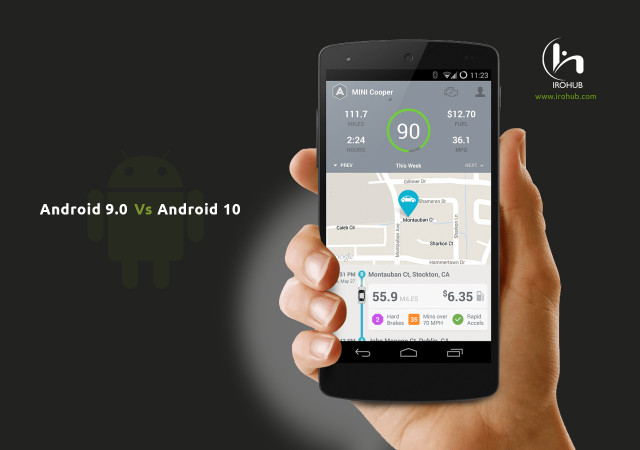Developing applications for Android and iOS may appear very related to the unpracticed eye, but the accuracy is that each of these two OS has its own attributes. There are many discrepancies between Android and iOS − both in the technical support of app development and in the method of building an application itself.
And not only at the professional level of Android and iOS development but also in times of design and app marketing policy. In other words, the whole notion of an app will be depending on the determined operating system. Developers who are changing from one operating system to a different, totally different programming language, will regard the differences.
Android vs iOS app development
Let’s take a peek at some variations that are regularly noticed by developers through the process of developing mobile apps for Android and iOS.
Programming language
The Android and iOS operating systems are individually programmed in complex programming languages. This is specifically the most significant exception: iOS apps run on Objective-C or Swift, while Android apps operate exclusively on Java.
Testing
An app’s QA testing stage is an indispensable element of the mobile app development method. The same refers to games and different kinds of software. One must guarantee that the app he is improving, works absolutely. The iOS simulator and the Android emulator are parts that are often practiced to test this.
A substantial variance is that the iOS simulator is extremely faster than its Android equivalent. However, the Android emulator has the relative advantage of being an active virtual machine including CPU, which presents it more practical than its iOS equivalent. In fact, the iOS simulator often disappoints to provide accurate and genuine portrayals of Apple devices.
For this purpose, it is vital to carry out several tests on actual mobile devices to see the app’s communication flow and discover possible bugs.
Interface
This is the time where we come transversely to the observed differences between producing an app for an Android or iOS end-user. At the professional level, the developer will make XML files onto Android interfaces. These are quite similar to iOS’ XIB files.
The state of iOS animations is more reliable than the one from Android. Google has decided to fix this through the research of Android L and by building an app design course known as Material Design. In the meantime, Apple has perpetually been concentrating on soft, complex, and powerful animations by watching after its aesthetics and user experience precisely. Google, on the other round, decided to willingly focus on the hardware preferably than these perspectives.
Additional features to take into account
When it comes to building apps, diversity among operating systems is not only caught on a technical level. Design and marketing are clearly influenced by them at a pretty fundamental level. Let’s see whereby to deal with these differences.
Cost
We’ve previously considered the cost to develop an app in a prior article. In fact, the iOS development method is somewhat more expensive because the market for iOS apps is more knowledgeable than for Android apps. In accession to this, the conditions for launching an application in iOS are very more expensive.
Design
As discussed before, an app’s design is intimately associated with its development means. This is why an app’s purpose is also visually varied depending on whether it has been produced for Android or for iOS.
Each of these OS has its own communication and style, which is heavily inspired by the two big groups that individually created them. It’s therefore desirable to have proficient app designers in one or both operating systems to guide us on our project. Only then can we produce genuinely fine local apps.
App Store Optimization
App Store Optimization (ASO) is not identical to an Android app as for an iOS app. We will hold to getting this fact into the story when optimizing the app to place it properly in the stores. We’ll have to spend special consideration on the variations in title and information; all the other variables are more or less identical for both cases.
Monetization and ROI
The yield on investment is usually not the same for an Android app as for an iOS app. Concentrating on the revenue source (the idea of monetizing the app itself), we can discern that iOS apps are more inclined to charge users for downloading them and for in-app purchases. Android applications are normally free to download and get monetized through ads installed in them.
Build your career in iOS with our expert-led training.

Conclusion
If you’re intending on building a viral app, contemplate building it for Android. Depending on your target audience and purposes, you might want to introduce iOS too. This means you’ll meet the most important part of possible users worldwide.
In case you’re watching for advice from mobile app industry authorities or if you’re looking for the right company to assist you in studying android app development or ios development course in kochi, then your search ends here. At iROHUB Infotech, we have dozens of mentors to support you.







Post Comments (0)